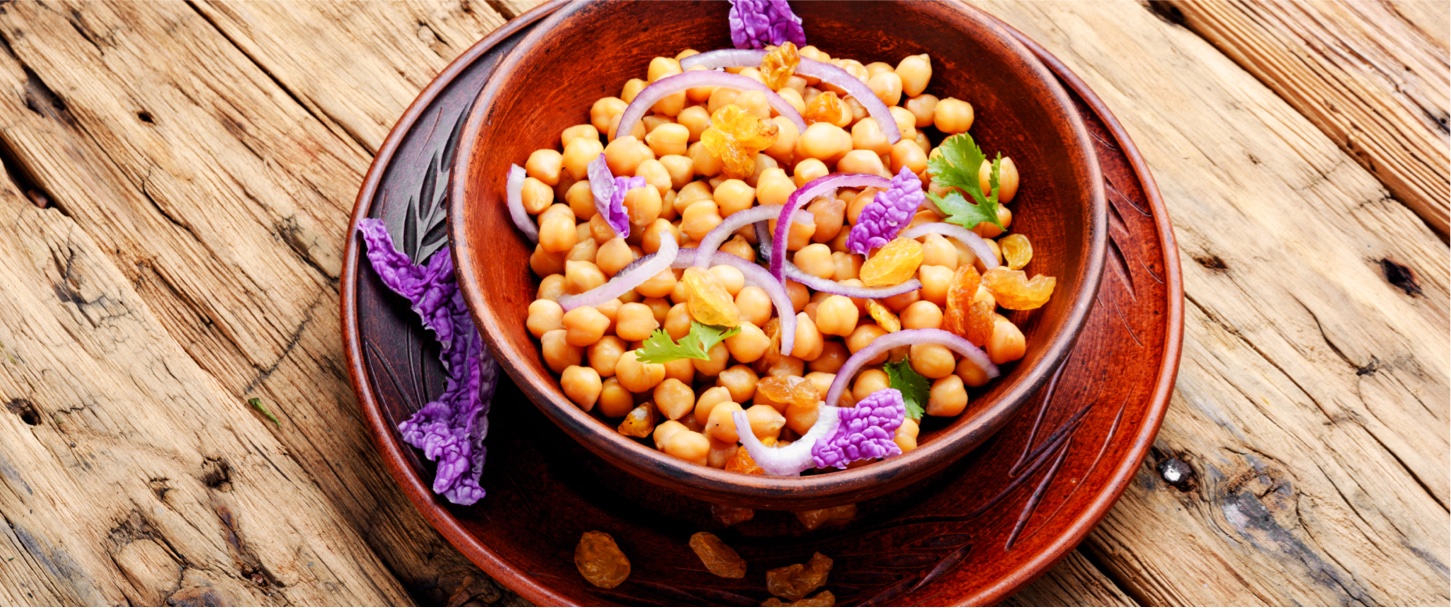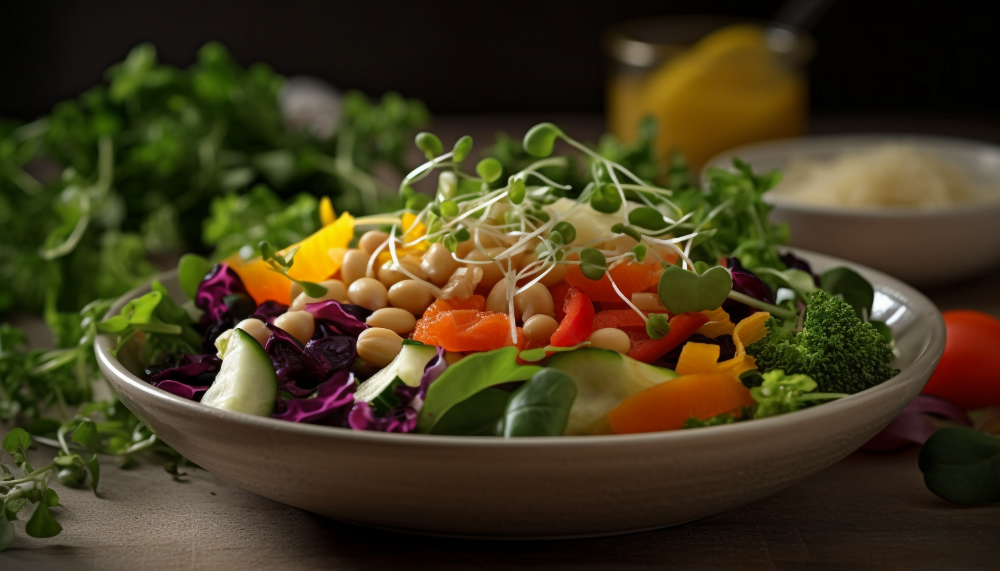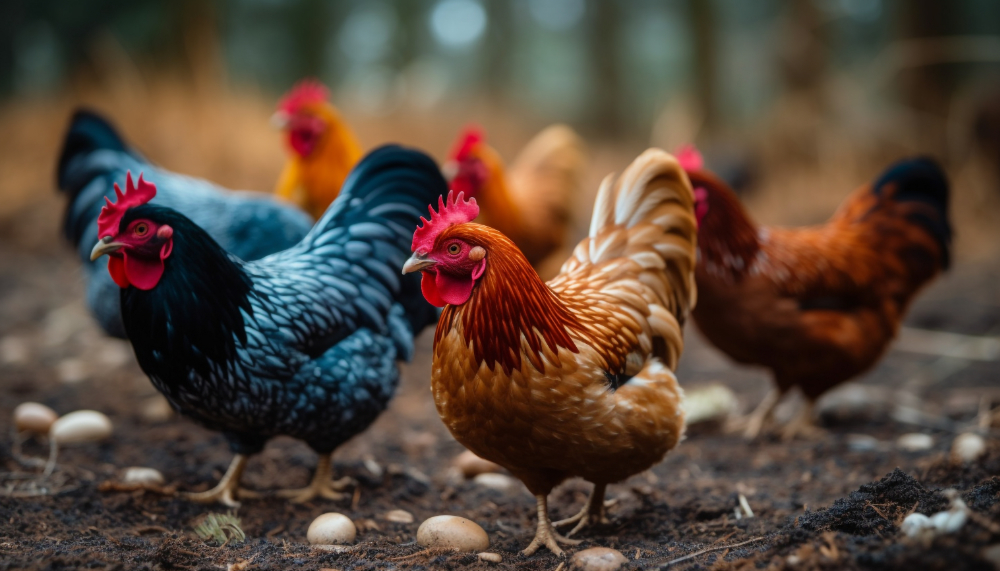Dried beans are a superior survival food when compared to other food options available during a crisis situation.
You have probably heard about dried beans and perhaps even eaten some but do not know where you should store them in your pantry. The truth is that they are great for survival situations and if you store them correctly they will keep for years.
If you think dried beans are just for your grandma, think again. They’re an excellent emergency food. Whether you’re planning ahead for a survival situation, or simply curious about what dried beans are, here are some interesting facts about the nutritional benefits of dried beans:
Nutritional Benefits of Beans
Remember the little ditty?
Beans, beans, good for your heart, the more you eat the more you f**t
The more you f**t the better you feel, so eat more beans at every meal!
Actually there is evidence that eating beans with all of their fiber, can eliminate the excess bile in your system. Your system was designed in a way to recycle the bile if the circumstances are not optimal. It’s better to get rid of the extra.
See the book by Unique Hammond about her Crohn’s disease and how she used beans to get better, (not that approve of her language, or the title), but the information about her road to healing is enlightening! She found this information in a book by Karen Hurd.
1. Beans are one of the best sources of protein
2. Beans are high in fiber, low in fat
3. Beans have a lot of minerals, such as iron, calcium, magnesium, and zinc
4. Beans are a good source of folate and fiber
5. Beans provide a good amount of protein and a lot of nutrients that help with heart disease and diabetes
6. Beans are high in fiber, low in saturated fat, and low in sodium
7. Beans are a good source of vitamin A, B-complex vitamins, potassium, magnesium, and manganese
8. Beans are a good source of iron, copper, phosphorous, and zinc
9. Beans contain antioxidants
Beans contain the same antioxidants as green tea, blueberries and dark chocolate, according to the U.S. National Library of Medicine. They are better absorbed by the body than any other source.
“The bean is a powerhouse of nutrition,” says Michael B. Smith, author of “The Bean Book,” a book that explains the food industry’s newest crop. A single serving contains 6 grams of protein, 3 grams of fiber, 6 percent of the recommended daily intake of iron, 2 percent of the recommended daily intake of calcium, and 8 percent of the recommended daily intake of potassium. The main drawback to beans, however, is the flatulence factor. Smith recommends that people eat beans only if they are part of a meal. “It’s really easy to overdo it with the beans, so try to keep it in check,” he says.
I think that you benefit by adding beans to your diet gradually, in order to allow your stomach microbiome to learn to handle any extra gas.
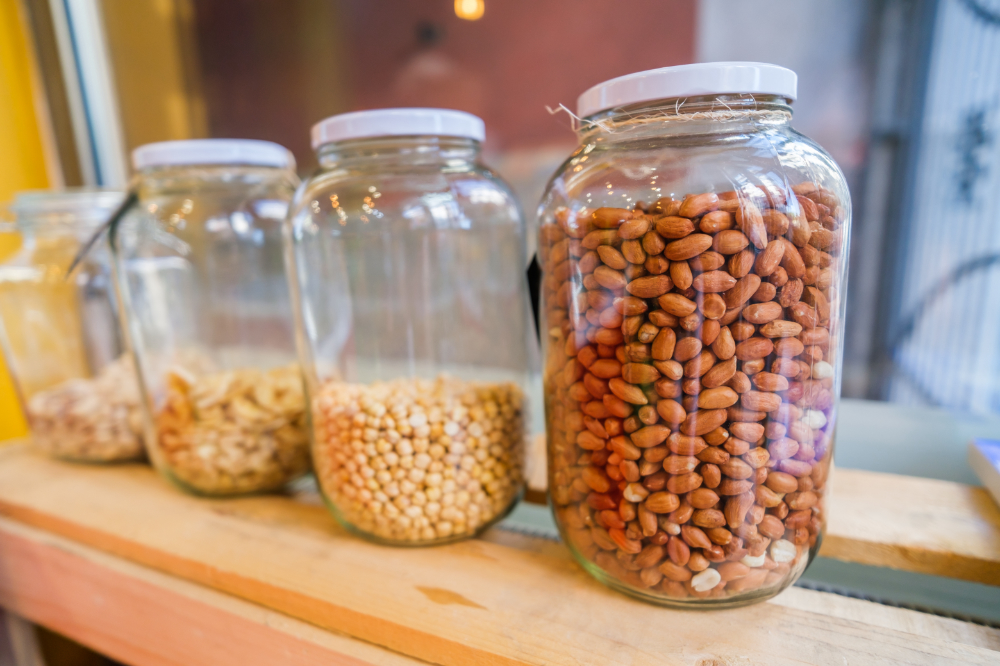
How to Store Dried Beans
Place your beans in airtight containers. Store beans in a dry, dark, cool location. The temperature should be below 65 degrees Fahrenheit and above 60 degrees Fahrenheit, according to the USDA. If you store beans at higher temperatures than this, they will become soggy.
Store your Dried beans for as long as a year in an airtight container away from heat and light. To store your dried beans for more than a few months, it’s best to keep them in the freezer.
You can use a dehydrator to dry beans. Drying beans is the best way to preserve them for a long time. You can keep them in a dry place for years and then cooked to use in soups and stews, or eaten as a snack. There are different types of beans, such as red kidney beans, pinto beans, black beans, and lentils, which have varying characteristics and cooking times. You can store beans in jars or plastic bags, and keep them in a cool, dry place for up to six months. HerAdd them to other foods to add variety and nutrition to your meals.
Storing Dried Beans in the Pantry
The best place to store dried beans is in an airtight container with a cool, dry environment — like the pantry. Storing them this way will keep them fresh for up to one year. Here are a couple of tips.
- Don’t store them near other items that produce gas (like onions or potatoes)
- Keep them away from light.
- Keep them in a dark space
Methods of storing dried beans:
- In jars with tight-fitting lids (or vacuum sealed)
- In sealed bags
- In the freezer (If you have room, it’s best to freeze them first and then store in a cool dry place)
Why Do We Soak the Beans First?
Soaking your dried beans will reduce the cooking time needed, however you cook them. This is a benefit because beans contain lectins that prevent our bodies from digesting them, and soaking reduces this lectin, allowing the body to properly absorb the beans. However, many people find that a shorter soak time is just as easy, or even easier.
Add the beans to a large pot and cover them with water by about 2 inches. Soaking the beans will help them cook faster, as well as reduce their gas-producing properties. Soaking also helps break down some of the compounds that make beans hard to digest and can cause flatulence in some people.
Not all beans need soaking, like Lentils.
Let the beans soak at least 6 hours or overnight (some people recommend for 24 to 48 hours for best results), then drain and rinse them well before proceeding with one of these cooking methods:
What if you don’t have time to soak your beans? This lady shows you how to cook beans quickly without soaking.
Cooking Beans
Most people soak them Dried Beans in water overnight to reduce cooking time. Then drain, rinse, and proceed with cooking. Rinse in cold water at least twice and drain again after soaking. The first rinse removes surface starch, making beans easier to cook. The second rinse flushes away any residual sugar and salt. This rinse may take a little longer than if you were to rinse and drain your beans straight after you’ve washed them.
Cooking Beans on the Stovetop
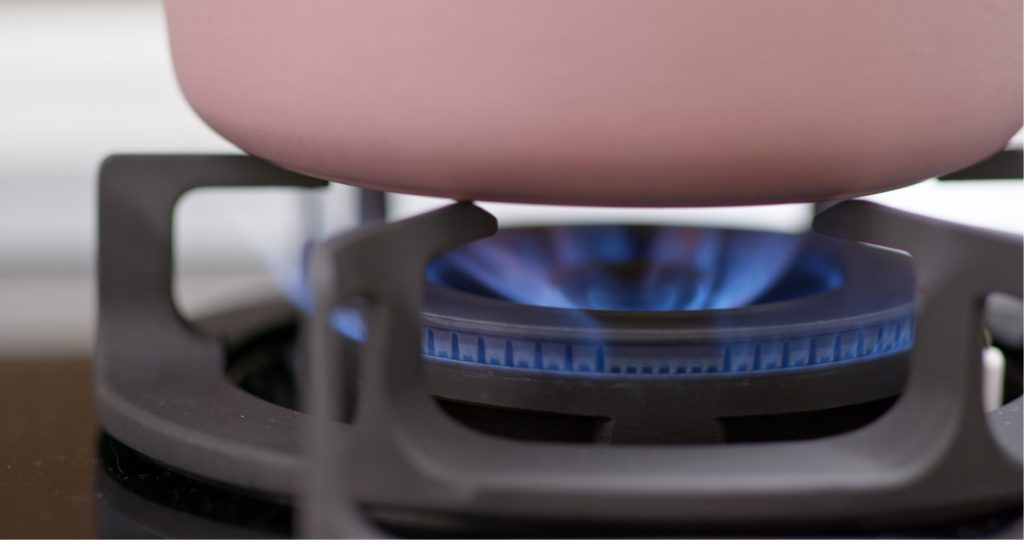
Cooking dried beans on a stove cooktop is fast and easy. The only drawback is that you will have to stand at the stove while they cook.
Preparation:
Place them in a pot with a cover, bring them to a medium simmer. Simmer your beans until tender. It will be about 30 minutes for most types of white beans. 45 minutes will work for kidney beans or black-eyed peas. Larger beans may need more cooking time. Add more water if necessary during cooking time so that the liquid covers the beans by at least two inches at all times while they are cooking. Keep an eye on them as they cook and remove from heat before they become too soft. Be cautious, beans will continue to absorb liquid after being removed from the heat. We don’t want them overcooked.
If desired, add salt to taste while hot.
Cooking Beans in a Crock Pot / Slow Cooker
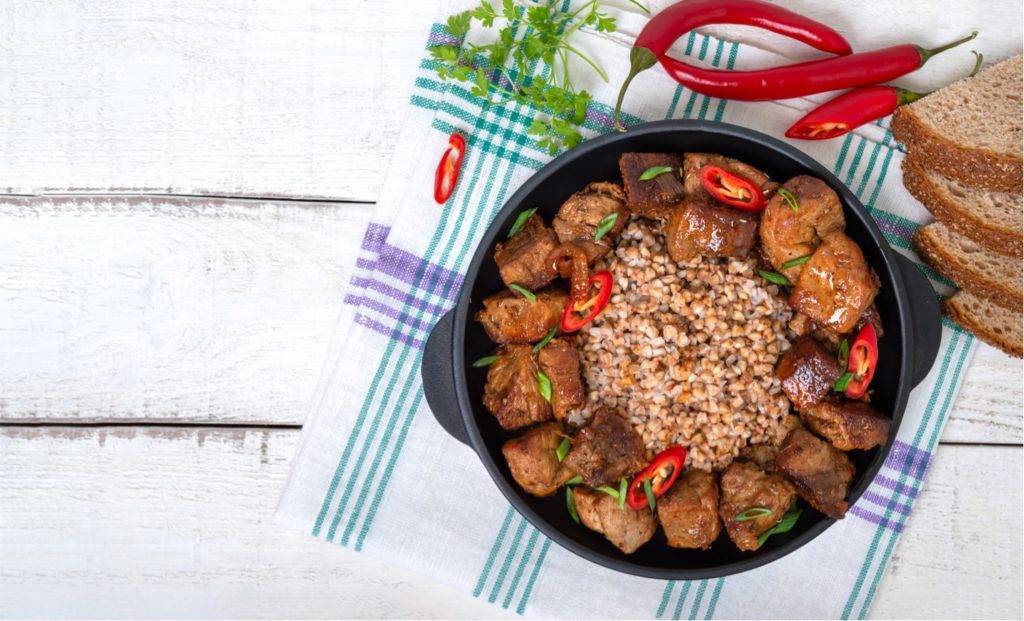
I love my crock pot and slow cooker because they are a great time saver for busy people. I don’t know about you but I’m always looking for ways to save time and effort in our everyday lives. My crock pot and slow cooker have saved me so much time and effort. I am constantly cooking beans and other vegetables in them. There are a lot of things that you can cook in them such as soups, stews, chili and so much more.
Slow cooker recipes are easy to prepare, easy to clean up and you don’t need to be in the kitchen for hours. All you need is beans and maybe some spices, water and a crock pot or slow cooker. This method also keeps the beans moist and ready to use in a short amount of time.
Cooking dried beans in a slow cooker is a great way to save money, and the slow cookers available today are inexpensive and easy to use.
A slow cooker is an electric appliance that cooks food slowly over a long period of time. Slow cookers are good for people, like me, who tend to forget and burn things. This makes it ideal for cooking dried beans, which require long periods of time to soften up.
Cooking dried beans in a slow cooker is simple: after soaking & draining the beans, combine your beans with some water or broth, seasonings and aromatics; cover and cook on low for 6-8 hours until tender. Add your salt after cooking. That’s it!
Cooking Beans in an Insta Pot / Pressure Cooker
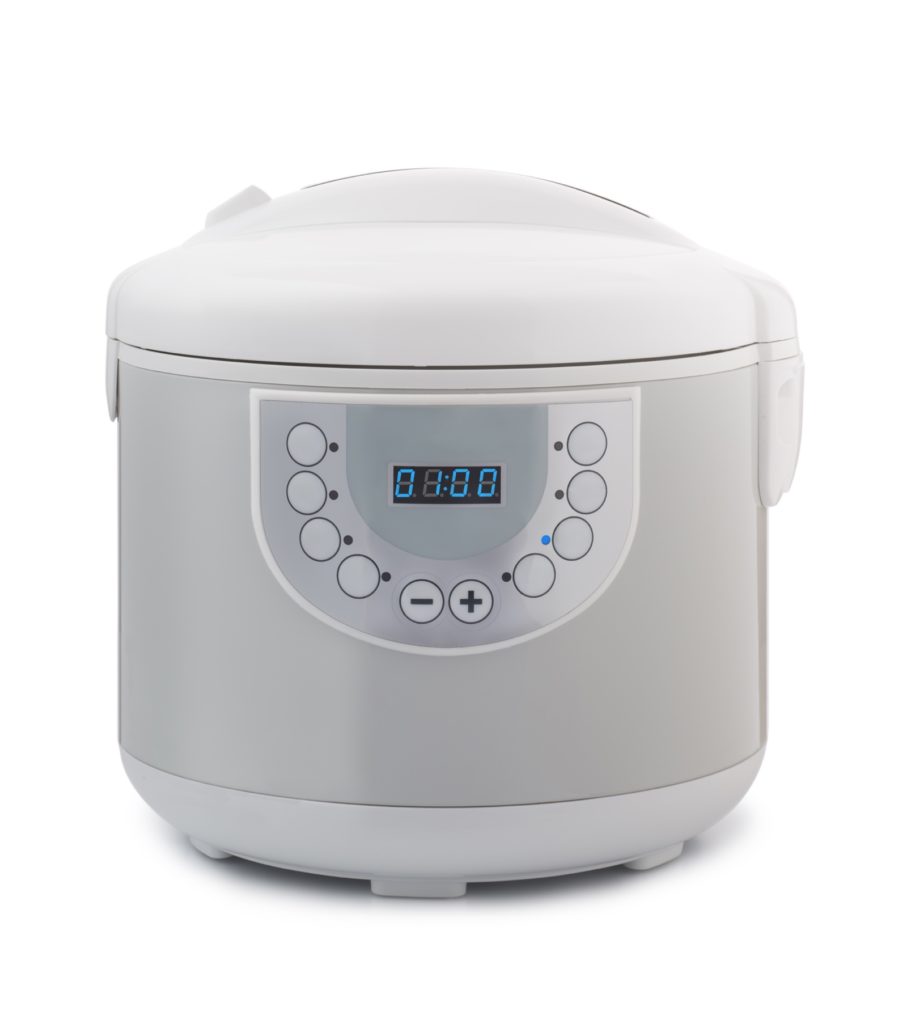
I love pressure cookers because they do all the work for you. There’s no need to babysit it. Less cleaning too. They’re also super cheap. An Insta Pot runs $40 to $80. So, if you’re looking to save money but still want to get great results, I’d recommend getting an Instant Pot.
I use my instant pot a lot because I am always short on time. I love cooking beans because it is easy and quick. If you cook beans in a regular pan, they will take a long time to cook. But if you pressure cook them, it cuts down the cooking time considerably.
The Instant Pot is one of the best gifts I have ever received. It has changed how I cook and made it much easier to make healthy meals for my family. One of the things I love about the Instant Pot is that it makes cooking dried beans so much quicker and easier than other methods.
I used to cook my beans in a pot on the stove but found that it took at least an hour, sometimes longer, to get them soft enough to use in recipes.
Now, I just throw all of my ingredients into the Instant Pot, set it to Manual for 20 minutes and walk away until it beeps. The entire process takes about 30 minutes and I don’t have to stand over the stove watching it like I did with the old-fashioned method.
Types of Beans
The second major category of foodstuffs that we should keep in mind are legumes. Beans are not just a healthy part of a meal, but a great nutritional addition to all of our diets. They’re high in fiber and protein, low in fat, high in iron and folate, and a good source of calcium, magnesium, and potassium. There are seven main types of beans that we should know about. These include: Black Beans, Chickpeas, Lentils, Kidney Beans, Navy Beans, Pinto Beans and Black-eyed Peas.
For those of us who like to be prepared, we should be glad there are so many good varieties of beans. So if you are wondering which ones are best, we will list the different types below.
Black Beans
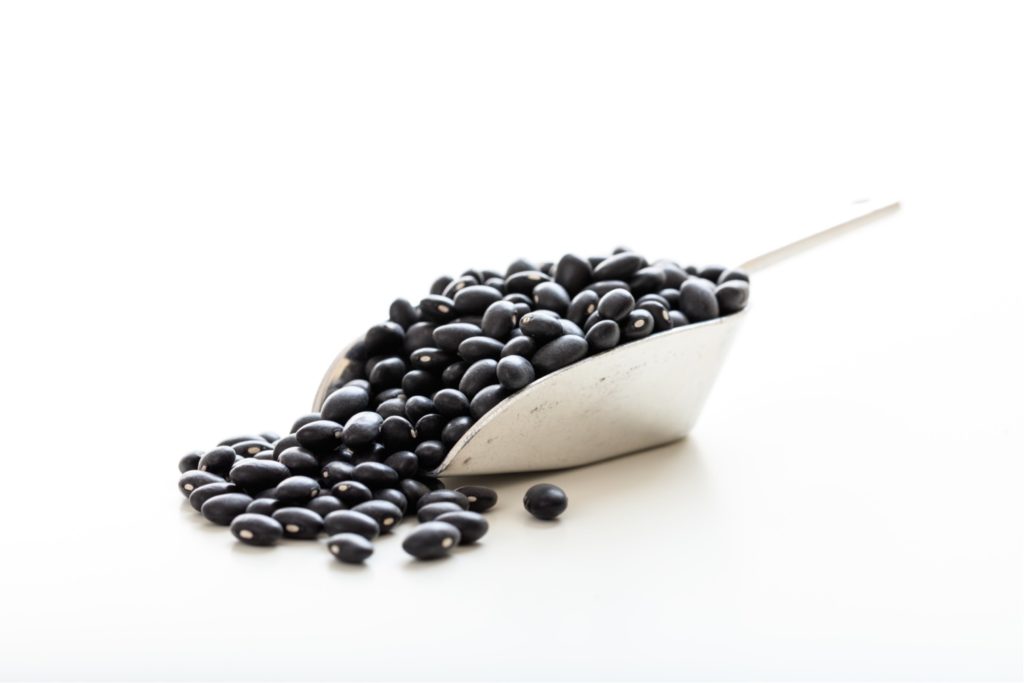
This food staple originated in South America. They are high in fiber and protein. There are many ways to use beans. We use them in:
- Soups
- Salads
- Sauces
People in South America eat them daily and often add them to other dishes. They boost your immune system. It is healthy to add beans to salads and sandwiches to make them healthier. They are also gluten free and cholesterol free.
Did you know black beans are one of the world’s most nutritious foods? They’re rich in fiber, vitamins, minerals, protein, folate, iron, zinc, magnesium, copper, and potassium. They’re one of my favorite sources of protein, and I use them often in recipes. Here are a few ideas for using them in your diet. Add a can of black beans to your favorite pasta sauce or chili. Cook with bacon or ham and sprinkle with cheese. Make a filling salad by adding some roasted veggies and a can of black beans. Add a can of black beans to your morning oatmeal.
Chickpeas
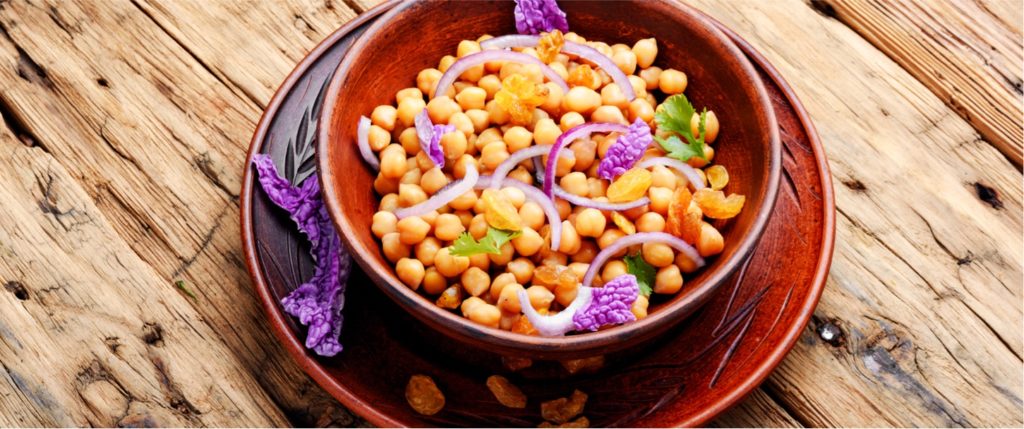
They’re not peas. Chickpeas are small, dry, oval beans. Some people call them garbanzo beans. People consider them as one of the oldest domesticated plants. We believe they originated in Turkey in the Near East region. For many years chickpeas have been grown in various regions of the world for many years.
People use Chickpeas in many different ways, including as a healthy snack or as a main ingredient in salads, soups, and pastas. Perhaps you have heard of Hummus. Chickpeas come in several sizes and colors, such as white, brown, red, black, or even green. There are two basic varieties of chickpeas: those with soft, wrinkled skins (called “French beans”) and those with hard, smooth skins (called “baby beans”).Mixed-mode oscillations in the neural field equation.
Chickpeas are one of the best protein-rich foods. They contain all nine essential amino acids, the building blocks of protein. They also contain high amounts of fiber, vitamins A, B, and C, potassium, iron, folate, and zinc. Chickpeas also contain lysine, a vital nutrient found only in animal protein, which helps maintain healthy skin and hair.
Lentils
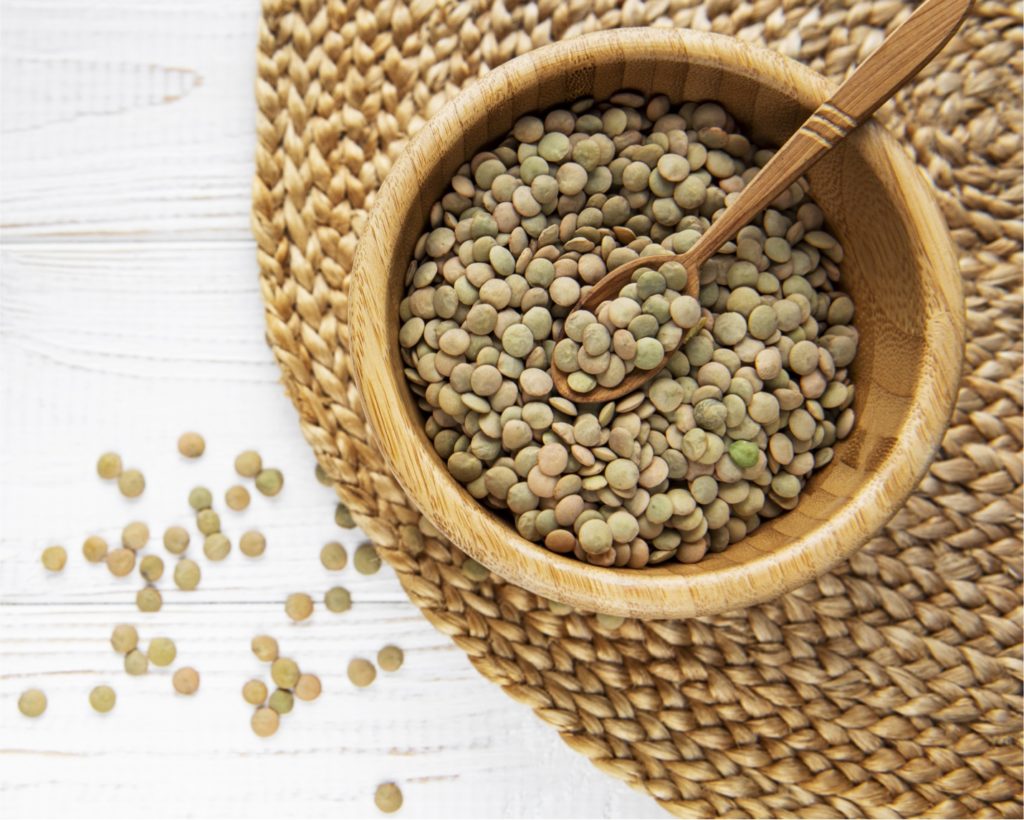
The small flat Lentil are a unique legume. You do not have to soak these They come in a variety of colors, shapes and sizes. They are low in fat and high in protein and fiber. They are eaten on their own or added to salads, soups, stews and many other dishes.
10,000 years ago, Lentils were grown. The lentil plant is an annual herb that grows up to 6 feet tall with bright green leaves and yellow flowers. The seeds themselves are small round disks that can be brown, red, green or black in color depending on variety.
Lentils are a legume, which means that they are an integral part of a healthy diet. The most commonly eaten variety of lentils are green or brown lentils. There are many varieties of lentils.
These legumes are known for being:
- Inexpensive
- Nutritious
- High in protein
The main nutrient that distinguishes lentils is their fiber content. Lentils are high in dietary fiber, which makes up approximately 9.3% of their weight. Another point is that Lentils are also high in protein. A 1 cup serving of lentils contains around 26 grams of protein.
The minerals that are commonly found in lentils include
- Calcium
- Iron
- Magnesium
- Phosphorus
- Zinc
Kidney Beans
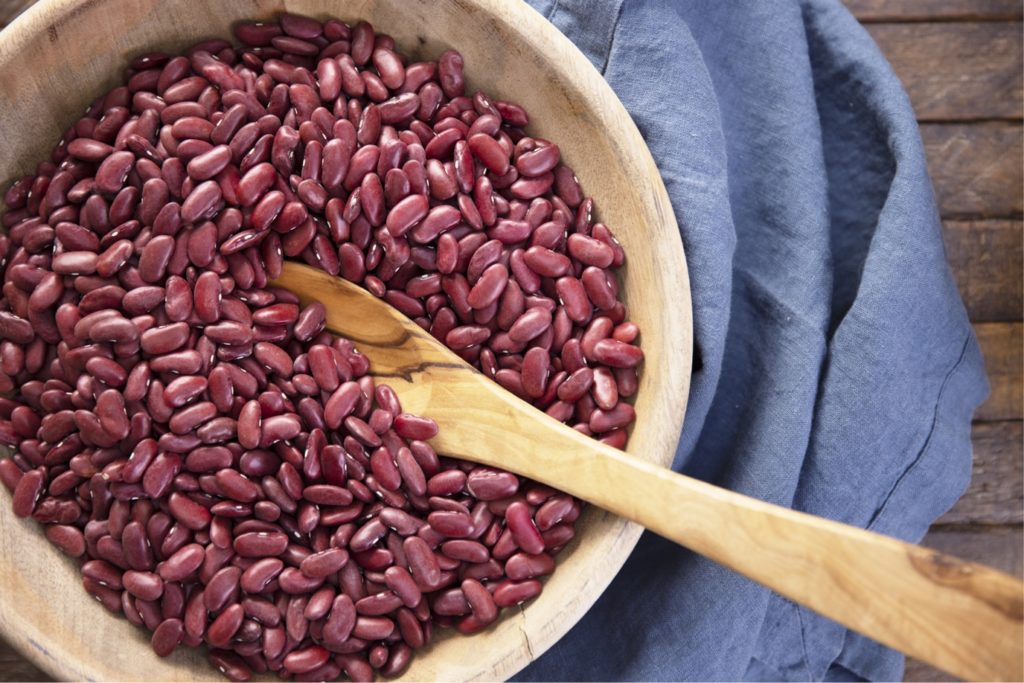
I always have Kidney Beans are always on my shelf. They are the shape of a kidney, hence their name. We most often see red ones, though there are other colors.
People usually use Kidney beans for making soups, stews, and other side dishes. They come in a variety of colors and sizes. In fact, the beans you’re thinking of may be pinto or black beans. Kidney beans are largely grown in the Americas.
Kidney beans are low in fat and sodium and high in fiber. Beans are also rich in iron, phosphorus, magnesium, manganese, copper, and zinc. The protein and fiber content of beans are also ideal for weight loss. They are often used in bean soups, stews, and salads.
Have you heard that one cup of cooked kidney beans has 10 percent of your daily protein requirement? It’s true: according to the USDA, one cup of cooked kidney beans (rinsed) provides 0.4 grams of protein, or roughly 10 percent of your recommended daily protein intake.
Here are essential amino acids in kidney beans….
- L-lysine
- L-methionine
- L-threonine
- L-tyrosine
- L-phenylalanine
These are the important amino acids that your body can’t produce on its own, so you need to include them in your diet.
Navy Beans

We love Navy beans are one of the most popular beans in America, especially in soup. Some people call them Yankee beans. The Peruvians grew them around 800 B.C. The Spanish explorers introduced into North America in the 1500s.
You can add Navy beans to any dish. Beans are a great source of:
- fiber
- potassium
- protein
- folate
- magnesium
- iron
Navy beans are also a great source of energy. They can provide a quick burst of energy throughout the day. If you need a quick snack or side dish, beans will work for you. I eat them as is, out of bowl or can. Many people add them to soups and stews, or even make them into a bean dip.
A new study found that consuming 2 servings of navy beans per week reduced risk of death by 20% and cut the risk of dying from heart disease by 27%. This study was published in the magazine JAMA Internal Medicine. In a study of over 100,000 participants, researchers found that those who ate the most beans had a lower risk of death from any cause, and that those who ate the most beans had a lower risk of death from heart disease.
Pinto Beans
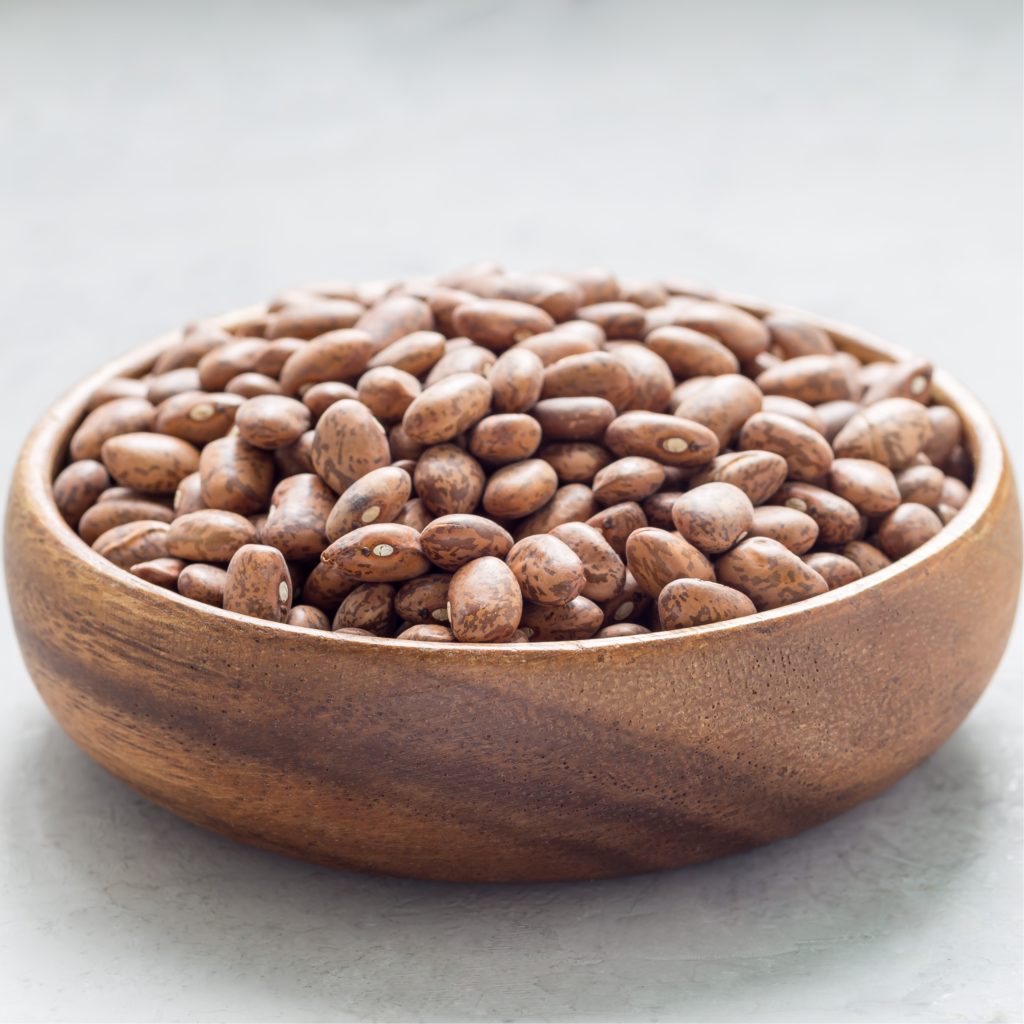
The spotted Pinto beans are a bean, or legume, commonly found in Mexican and Central American cuisine. They’re round, brownish-green beans with an intense and earthy flavor. They come in all shapes and sizes. Pinto beans can be used as a substitute for black beans.
They can be found in many dishes
- chili con carne
- refried beans
- nachos
- burritos
- tacos
- salads
- soups
- stews
- tamales
- bread
Pinto beans are high in protein and fiber and low in calories, carbs, and cholesterol.
They are also rich in…
- iron
- thiamin
- riboflavin
- niacin
- zinc
- folate
- magnesium
- potassium
Here are the vitamins that you will find in Pintos:
- B6
- B12
- C
- D
- E
- K
Pinto beans are used in many dishes.
Black-eyed Peas
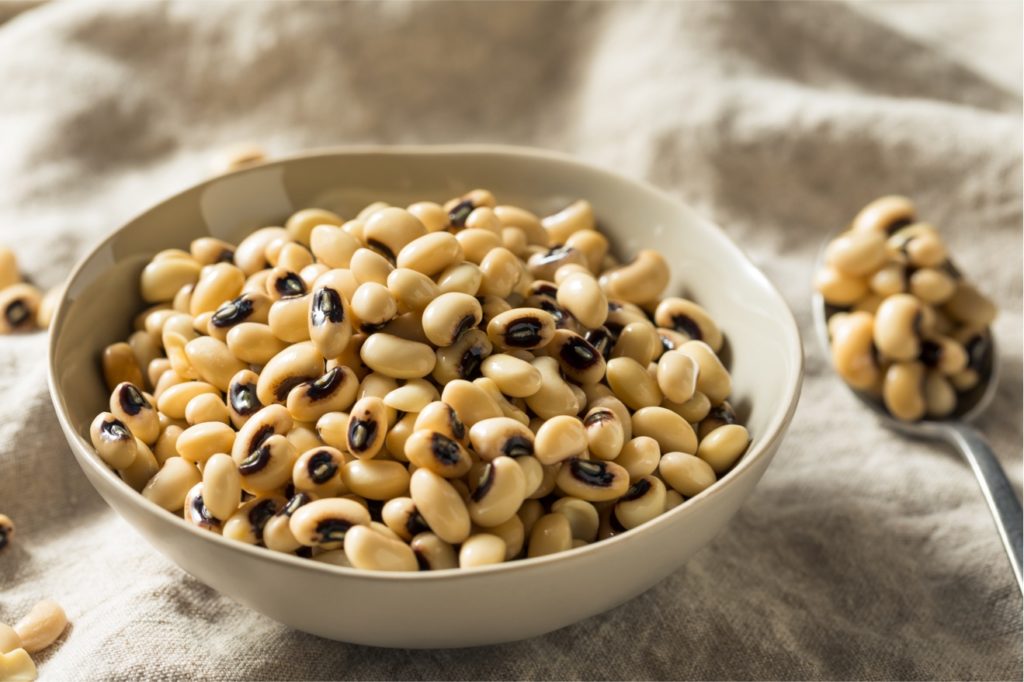
We love Black-eyed peas here in the South on New Years. They are a traditional Southern staple. They are typically cooked and eaten with rice.
Many people cook Black-eyed Peas with fatback and enjoy it with cornbread. Most people don’t even realize that black eyed peas are not just a food staple, but also a part of our cultural identity. Black eyed peas were a staple for the Africans who came to the American South, and their legacy lives on today.
While it may seem that black-eyed peas are an oddball food, the tradition of cooking them spans generations. Black-eyed peas are one of the only legumes that contain vitamin B6. Our bodies need B6 for energy production. These beans also have a good amount of iron, which helps keep blood cells healthy and protects against anemia.
Proteins are used as building blocks for our bodies. But did you know that black-eyed peas are an even better source than other legumes? Black-eyed peas have a very high amount of protein content. About 18 percent of its dry weight consists of protein. Protein is necessary for healthy growth.
Black-eyed peas, known as field peas in the United States, contain an antioxidant called L-cysteine that may help protect against asthma, cancer, diabetes and heart disease.
Did you know that you can prepare black-eyed peas as a soup, a salad, a stew, or even as a side dish? All you need is a few ingredients to create some delicious meals.
One recipe you should try is our black-eyed pea soup with bacon. To create this hearty meal, you’ll want to start with….
- Four cups of cooked black-eyed peas
- Add a slice of bacon
- Add two cups of water
- Simmer until it is thick and creamy
- Season with salt and pepper
- Serve over a bed of rice
Black-eyed pea soup is also a great source of protein.
In Conclusion
Dried beans are a good choice as a survival food due to the fact that they are a high-quality protein source. The human body stores protein efficiently. Dried beans are stored easily and provide long-term nutrition. Even if you don’t like the taste of dried beans, the benefits far outweigh this downside.
In conclusion, if you can’t use beans in any way as part of your survival food stockpile, at least buy a few cans to stash away in your go bag. The average person will require 10 to 15 pounds of dried beans to survive for a year, so if you buy five-pound bags of beans, you’ll have enough to last you at least three months. The most important thing is to keep in mind that dried beans are a cheap, high-quality food source that will provide you with essential nutrients and energy.
Beans are a great nutritional food source. I hope this will inspire you to start using this great food source!
_____________________________________________________

